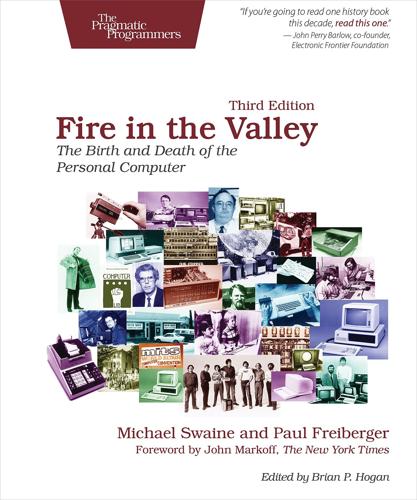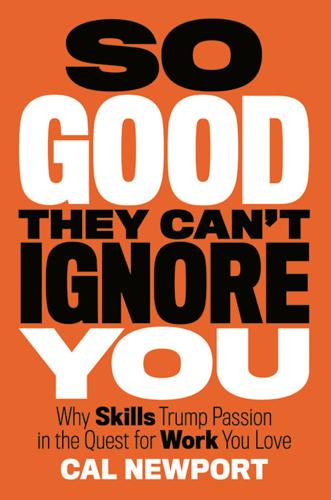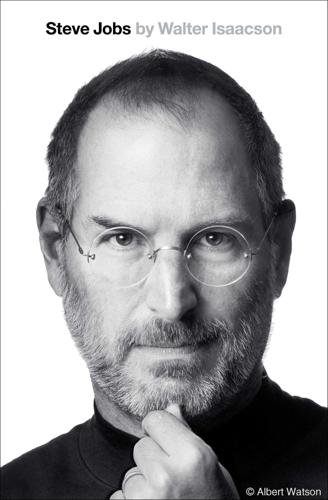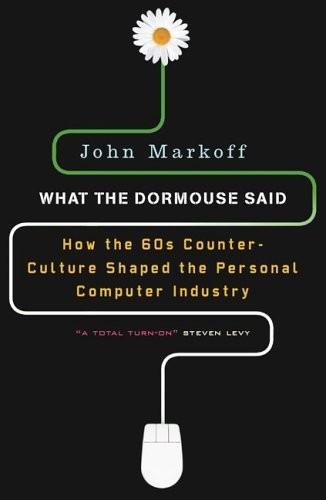
Fire in the Valley: The Birth and Death of the Personal Computer
by
Michael Swaine
and
Paul Freiberger
Published 19 Oct 2014
External examination was fine, Killian said, but he really needed to get inside the thing and dismantle it. His friend liked his Altair as it was, intact. Millard phoned Paul Terrell, whose nearby Byte Shop was one of the few Altair dealerships in the country. Millard ordered some Altairs for dissection. Over the next few months, Killian would tear the computers apart, figure out how they were made, and replicate them. * * * Figure 26. Paul Terrell Terrell supplied Bill Millard with the Altairs that Joe Killian disassembled to learn how to replicate and improve the design. (Courtesy of Paul Terrell) The Salesmen Millard’s team was beginning to grow. Killian had worked many late nights on another project, and Millard gave him a much-needed vacation in February 1975.
…
Like many of the personal-computer pioneers, Heiser had broken new ground through his unflagging enthusiasm for the technology. Even in retailing, the hobbyist ideal led the way. But unlike computer design, which can be done for love or for money, retailing is necessarily a commercial venture. Computer retailing quickly attracted individuals more aggressive than Heiser, including Paul Terrell. Byte Shop Paul Terrell’s friends warned him that retailing computers would never work. Some people, Terrell mused, also said it never snowed in Silicon Valley. Terrell recalled his friends’ warnings as he watched snow drifting down on December 8, 1975—the day he opened his Mountain View Altair dealership, Byte Shop, in the heart of Silicon Valley.
…
Byte Shop The original Mountain View Byte Shop (Courtesy of Paul Terrell) It wasn’t long before David Bunnell, then MITS vice president of marketing, called to cancel Byte Shop’s Altair dealership. Terrell argued that MITS should regard Byte Shop as something like a stereo store that carried many different brands and could turn a profit for them all. Bunnell waffled. It was Roberts’s decision, he said. At the World Altair Computer Convention in March 1976, Terrell approached Roberts directly about his being dropped from the roster of MITS dealers. Roberts stood firm. Terrell was out. * * * Figure 52. Inside Byte Shop Paul Terrell opened Byte Shop in 1975 in Mountain View, CA.

So Good They Can't Ignore You: Why Skills Trump Passion in the Quest for Work You Love
by
Cal Newport
Published 17 Sep 2012
Jobs wanted to sell one hundred, total, which, after removing the costs of printing the boards, and a $1,500 fee for the initial board design, would leave them with a nice $1,000 profit. Neither Wozniak nor Jobs left their regular jobs: This was strictly a low-risk venture meant for their free time. From this point, however, the story quickly veers into legend. Steve arrived barefoot at the Byte Shop, Paul Terrell’s pioneering Mountain View computer store, and offered Terrell the circuit boards for sale. Terrell didn’t want to sell plain boards, but said he would buy fully assembled computers. He would pay $500 for each, and wanted fifty as soon as they could be delivered. Jobs jumped at the opportunity to make an even larger amount of money and began scrounging together start-up capital.
…
It follows that if you want a great job, you need something of great value to offer in return. If this is true, of course, we should see it in the stories of our trio of examples—and we do. Now that we know what to look for, this transactional interpretation of compelling careers becomes suddenly apparent. Consider Steve Jobs. When Jobs walked into Paul Terrell’s Byte Shop he was holding something that was literally rare and valuable: the circuit board for the Apple I, one of the more advanced personal computers in the fledgling market at the time. The money from selling a hundred units of that original design gave Jobs more control in his career, but in classic economic terms, to get even more valuable traits in his working life, he needed to increase the value of what he had to offer.

Steve Jobs
by
Walter Isaacson
Published 23 Oct 2011
He was trying to get them to see the amazing value of the Apple. It was a rhetorical flourish he would use at product presentations over the ensuing decades. The audience was not very impressed. The Apple had a cut-rate microprocessor, not the Intel 8080. But one important person stayed behind to hear more. His name was Paul Terrell, and in 1975 he had opened a computer store, which he dubbed the Byte Shop, on Camino Real in Menlo Park. Now, a year later, he had three stores and visions of building a national chain. Jobs was thrilled to give him a private demo. “Take a look at this,” he said. “You’re going to like what you see.”
…
He went to Haltek Supply and offered an equity stake in Apple in return for the parts, but the owner decided they were “a couple of young, scruffy-looking guys,” and declined. Alcorn at Atari would sell them chips only if they paid cash up front. Finally, Jobs was able to convince the manager of Cramer Electronics to call Paul Terrell to confirm that he had really committed to a $25,000 order. Terrell was at a conference when he heard over a loudspeaker that he had an emergency call (Jobs had been persistent). The Cramer manager told him that two scruffy kids had just walked in waving an order from the Byte Shop. Was it real?
…
It looked as if it had been produced by grown-ups. The Apple I, on the other hand, appeared as scruffy as its creators. CHAPTER SIX THE APPLE II Dawn of a New Age An Integrated Package As Jobs walked the floor of the Personal Computer Festival, he came to the realization that Paul Terrell of the Byte Shop had been right: Personal computers should come in a complete package. The next Apple, he decided, needed to have a great case and a built-in keyboard, and be integrated end to end, from the power supply to the software. “My vision was to create the first fully packaged computer,” he recalled.

The Innovators: How a Group of Inventors, Hackers, Geniuses and Geeks Created the Digital Revolution
by
Walter Isaacson
Published 6 Oct 2014
“If we’re not 50-50,” Jobs said, “you can have the whole thing.” Wozniak, however, understood what Jobs contributed to their partnership, and it was worth at least 50 percent. If he had been on his own, Wozniak might not have progressed beyond handing out free schematics. After they demonstrated the computer at a Homebrew meeting, Jobs was approached by Paul Terrell, the owner of a small chain of computer stores called The Byte Shop. After they talked, Terrell said, “Keep in touch,” handing Jobs his card. The next day Jobs walked into his store barefoot and announced, “I’m keeping in touch.” By the time Jobs had finished his pitch, Terrell had agreed to order fifty of what became known as the Apple I computer.
…
ACKNOWLEDGMENTS I want to thank the people who gave me interviews and provided information, including Bob Albrecht, Al Alcorn, Marc Andreessen, Tim Berners-Lee, Stewart Brand, Dan Bricklin, Larry Brilliant, John Seeley Brown, Nolan Bushnell, Jean Case, Steve Case, Vint Cerf, Wes Clark, Steve Crocker, Lee Felsenstein, Bob Frankston, Bob Kahn, Alan Kay, Bill Gates, Al Gore, Andy Grove, Justin Hall, Bill Joy, Jim Kimsey, Leonard Kleinrock, Tracy Licklider, Liza Loop, David McQueeney, Gordon Moore, John Negroponte, Larry Page, Howard Rheingold, Larry Roberts, Arthur Rock, Virginia Rometty, Ben Rosen, Steve Russell, Eric Schmidt, Bob Taylor, Paul Terrell, Jimmy Wales, Evan Williams, and Steve Wozniak. I’m also grateful to people who gave useful advice along the way, including Ken Auletta, Larry Cohen, David Derbes, John Doerr, John Hollar, John Markoff, Lynda Resnick, Joe Zeff, and Michael Moritz. Rahul Mehta at the University of Chicago and Danny Z.
…
In March 2003 blog as both a noun and a verb was admitted into the Oxford English Dictionary. 44. Tellingly, and laudably, Wikipedia’s entries on its own history and the roles of Wales and Sanger have turned out, after much fighting on the discussion boards, to be balanced and objective. 45. Created by the Byte Shop’s owner Paul Terrell, who had launched the Apple I by ordering the first fifty for his store. 46. The one written by Bill Gates. 47. Gates donated to computer buildings at Harvard, Stanford, MIT, and Carnegie Mellon. The one at Harvard, cofunded with Steve Ballmer, was named Maxwell Dworkin, after their mothers. 48.

The Code: Silicon Valley and the Remaking of America
by
Margaret O'Mara
Published 8 Jul 2019
Warren was no coder, nor was he the next Henry Luce, but as editor of Dr. Dobb’s he helped fill the gap between increased availability of computers and a lack of off-the-shelf software to go with it.10 Then there were retailers, who’d popped up on the scene as distributors of Altair kits, and quickly morphed into far more. Paul Terrell started the Byte Shop in Mountain View at the end of 1975, disregarding the advice of friends who thought he’d never find customers. When sixteen people showed up one day for a seminar at the store on “Introduction to Computers,” Terrell realized that computer courses needed to be a regular feature at the Byte Shop.
…
The first logo, designed by Wayne, had the retro-hippie design beloved by techie newsletters like the PCC and Dr. Dobb’s. It featured Isaac Newton sitting under a tree, surrounded by words uttered not by Newton, but by William Wordsworth: “A mind forever voyaging through strange seas of thought—alone.” The inaugural sales flyer was similarly loopy, with a typo in the first sentence.7 Jobs persuaded Paul Terrell at the Byte Shop to buy fifty units of the Apple I, which Terrell agreed to do under one condition: no kits. The machines needed to be fully assembled. In a move that Apple’s marketers later made sure to burnish into company legend, Jobs sold his VW microbus and Woz sold two HP calculators to finance the start-up costs.

What the Dormouse Said: How the Sixties Counterculture Shaped the Personal Computer Industry
by
John Markoff
Published 1 Jan 2005
That spirit, in turn, foreshadowed the chasm that has come to divide the digital world, underscoring all of the struggles that today are reshaping both the consumer and business computing worlds from Napster to open source. The chasm first appeared when the MITSmobile arrived in Palo Alto as a result of the efforts of a marketing-savvy sales representative named Paul Terrell. Terrell had approached MITS about the possibility of distributing their new Altair computer. Although the company was planning on selling the machines by mail order, Terrell met with MITS’s founder Ed Roberts at the National Computer Conference in Anaheim, California, in 1975 and reached an agreement where he would promote Altairs in northern California and in return receive a commission on the machines sold in the region.

Becoming Steve Jobs: The Evolution of a Reckless Upstart Into a Visionary Leader
by
Brent Schlender
and
Rick Tetzeli
Published 24 Mar 2015
Pixar’s Ed Catmull likes to say that since you can’t control the luck itself, which is bound to come your way for better and for worse, what matters is your state of preparedness to deal with it. Steve had a kind of hyperawareness of his surroundings that allowed him to leap at opportunities that presented themselves. So when Paul Terrell, the owner of the Byte Shop computer store in nearby Mountain View, introduced himself to Steve and Woz after the presentation and let them know he was impressed enough to want to talk about doing some business together, Steve knew exactly what to do. The very next day he borrowed a car and drove over to the Byte Shop, Terrell’s humble little store on El Camino Real, Silicon Valley’s main thoroughfare.